Struggling to make progress with pen and ink?
In this article, I share three tips and a Moebius piece.
Disclosure: Some of the links on this page are affiliate links. I earn a reward or small commission when you use those links at no cost to you. Read more about the Affiliate Disclosure on the Terms page.
Tip 1 – Start with the end in mind
You need an objective.
If you’re in the habit of self-assessing your art, you already have a solid idea of the areas you want to progress in.
You’re also likely aware that, to make improvements – it all ties back to practicing the art fundamentals.
For example, my objective with this Moebius master study (below) was to improve how I communicate light and shadow with lines.
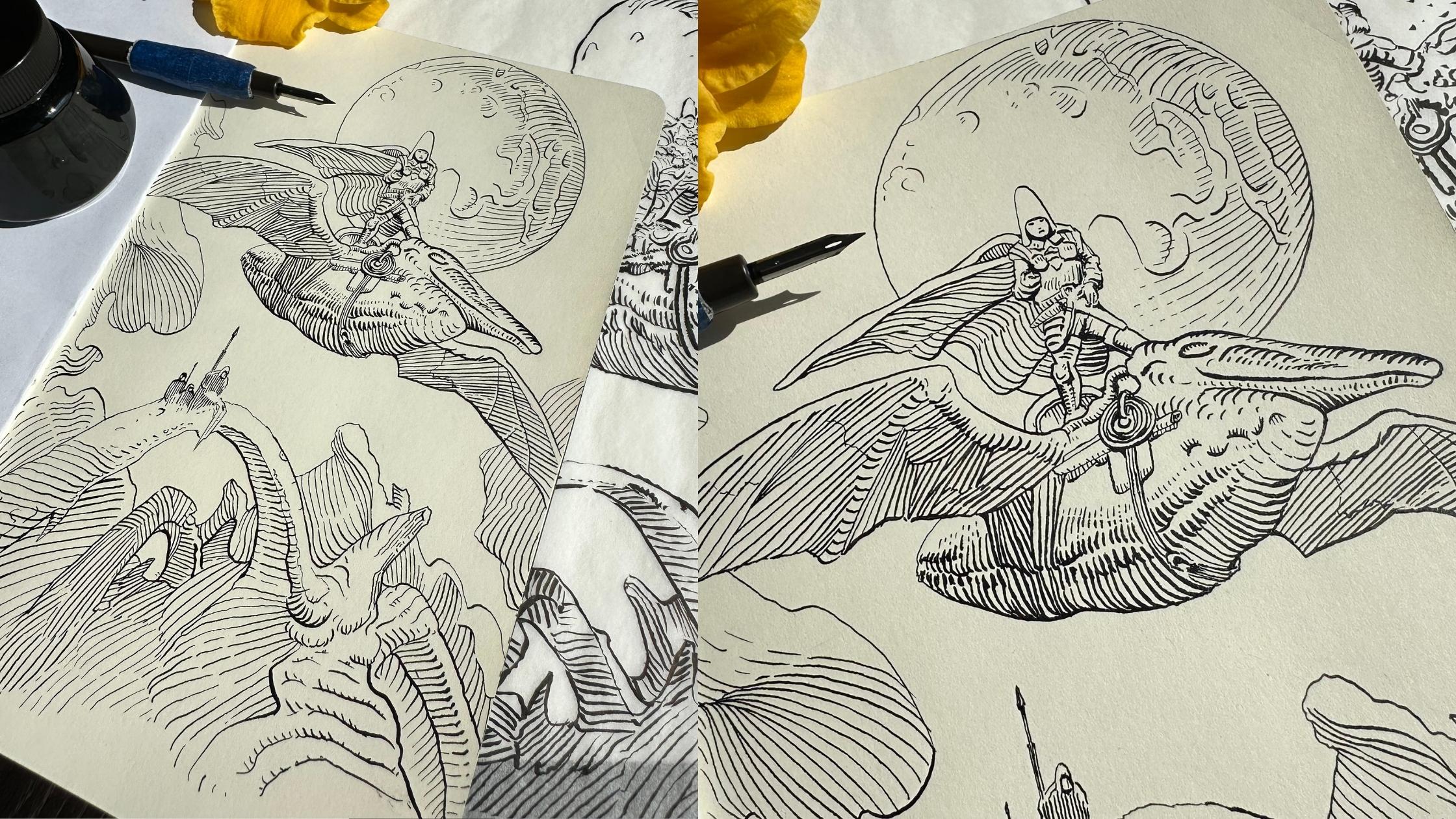
If you tend to feel overwhelmed when looking at the art of the masters, then having an objective will help you navigate through any unconstructive thoughts and keep you focused on the learning tasks.
- How will doing a master study help you reach your goals?
- What skills or knowledge will you gain?
You’ll want to give these questions some thought beforehand.
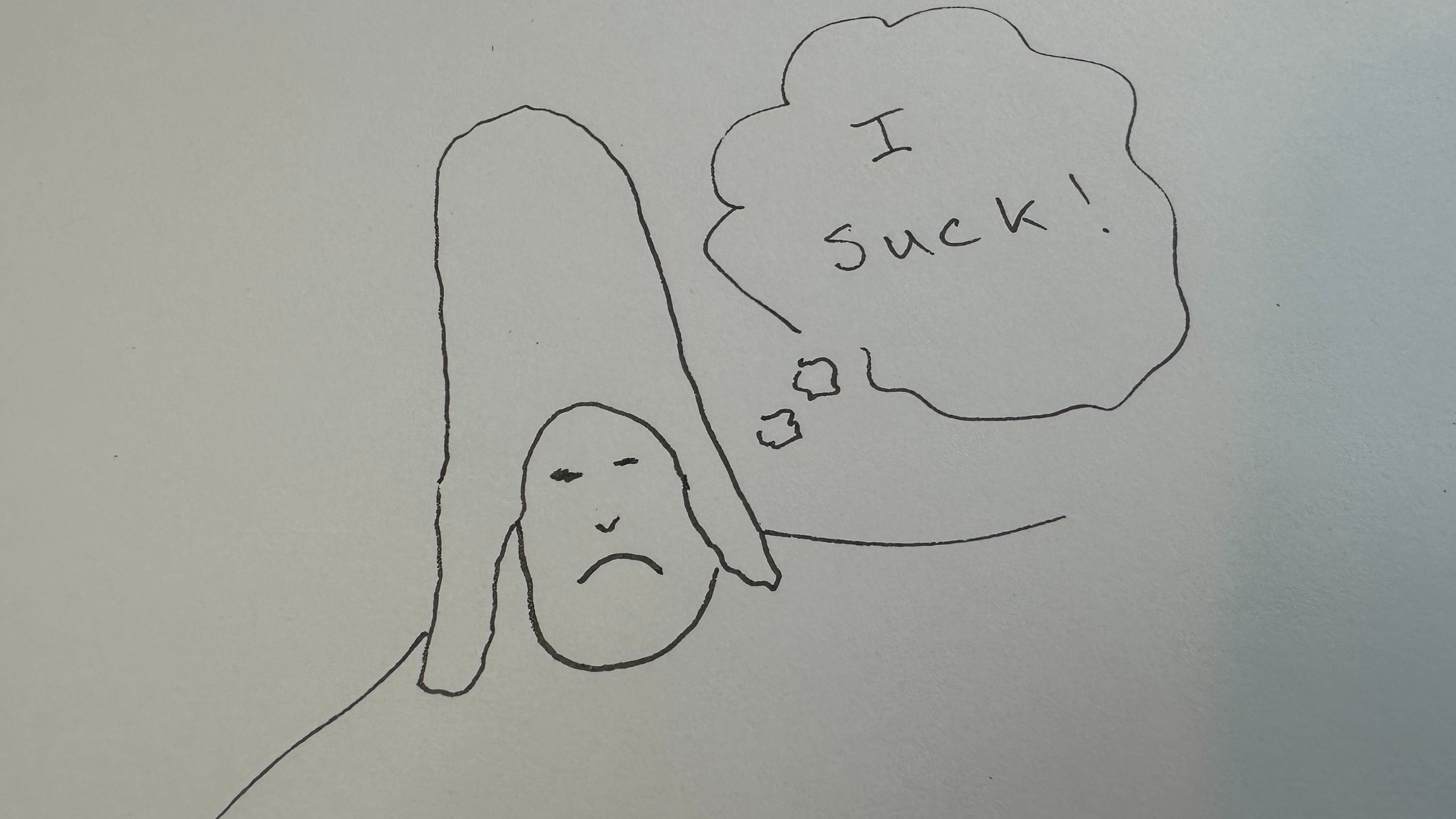
Tip 2 – Understand what you’re doing
Tracing a master’s work will help with imitating their stroke technique.
Copying can facilitate a better understanding of how the master made decisions. Copying is a way to imitate how they executed the art fundamentals.
Some would argue that these methods have no value as a learning aid – and I’d agree that tracing and copying have their limitations in teaching you how to draw. Unless we pair these methods with a learning objective.
Meaning that it’s important to understand what you’re doing.
When tracing and copying, aim to understand why the master made the decisions that they did.
Just tracing or copying without gaining any insights from those tasks is a wasted opportunity.
Because in the end, we want to be able to apply those insights to our work.
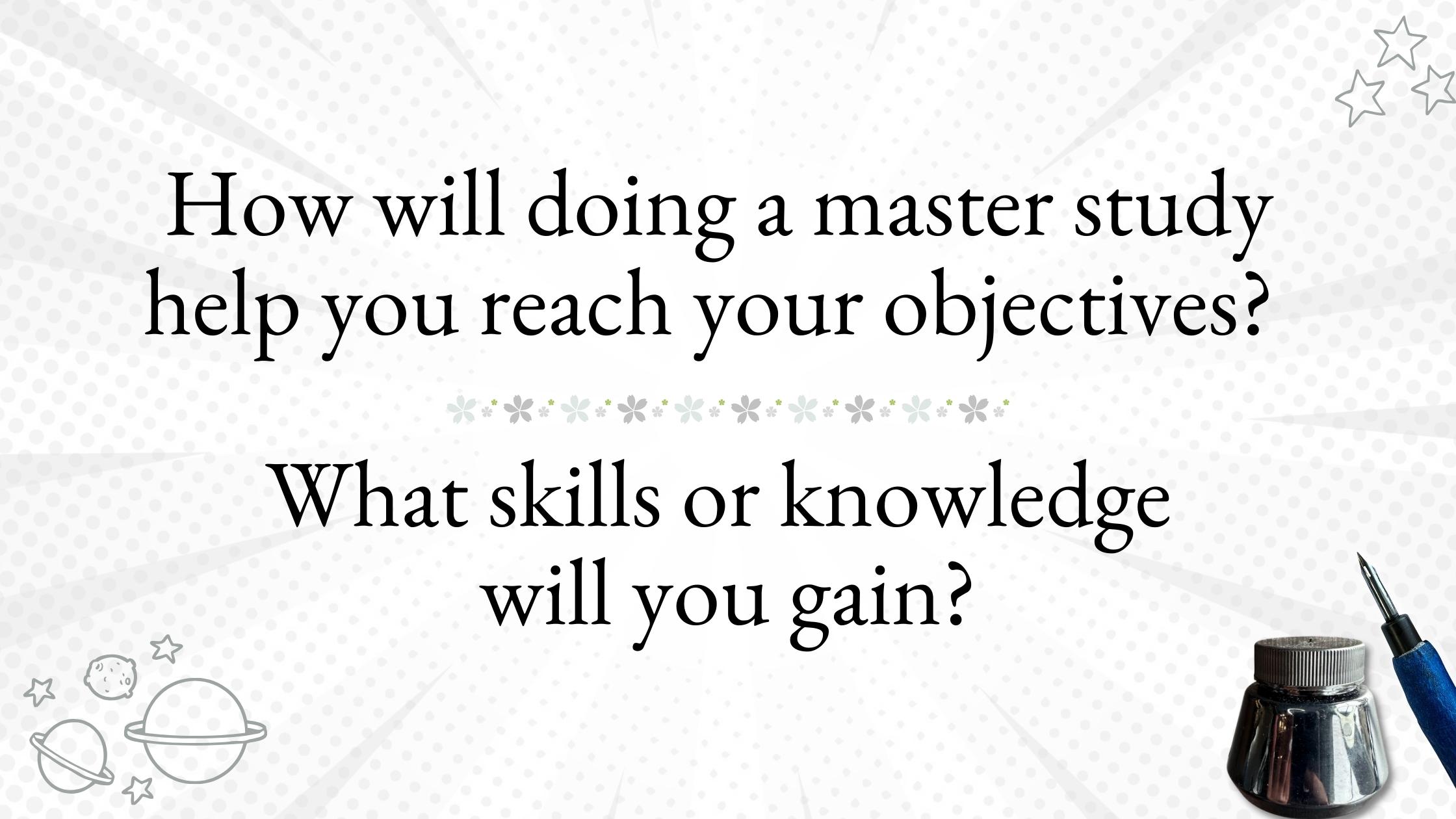
Tip 3 – Accelerate your learning by using a structured framework.
A learning objective will keep you focussed.
Seeking to understand why the master executed the fundamentals a certain way will deepen your insights for transferring the learnings into your work.
And if you want to accelerate your learning, then it’s beneficial to follow a structured framework.
Essentially, you need a plan.
I have two approaches to doing master studies.
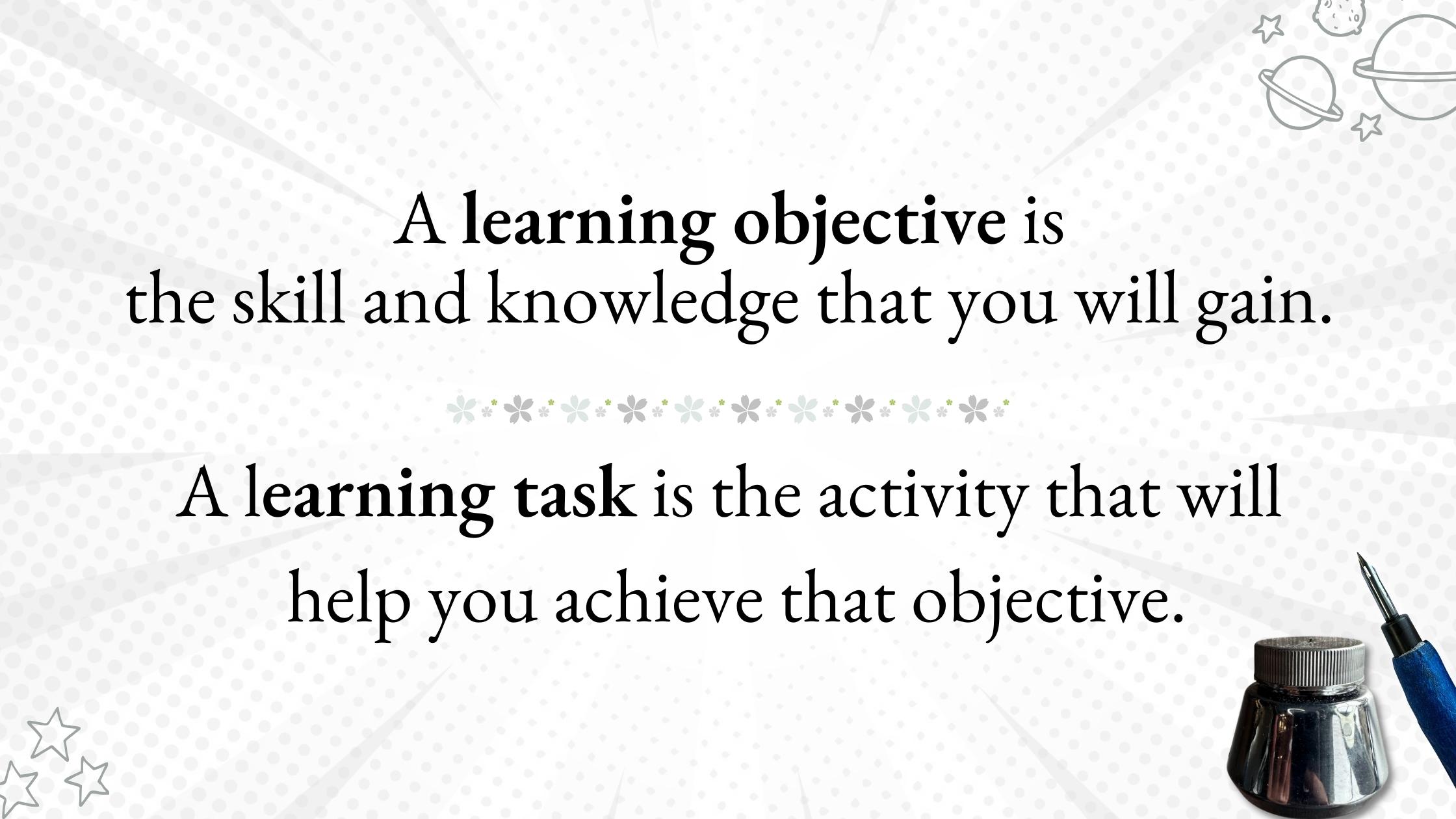
Study approach I
The first, as mentioned, is to assess your work.
Determine which of the art fundamentals you most need to work on, then search for a master who is proficient in those areas.
For example, when I want to improve my gesture drawings, I look at Karl Kopinski’s work. If I want to practice dynamic compositions, I look at Katsuya Terada.
You can read more about this approach in my post on how to do master studies.
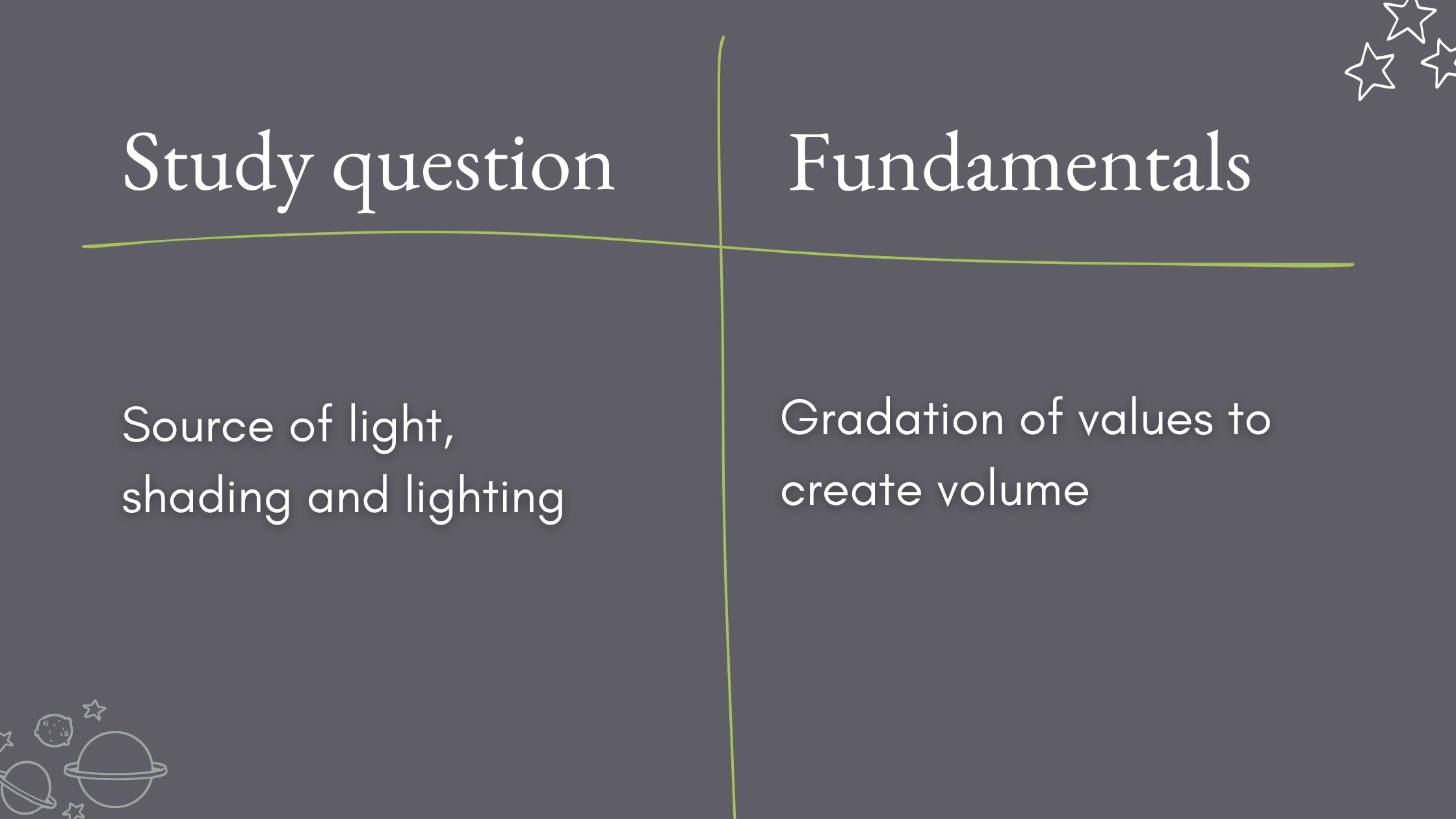
Study approach II
The second approach is useful when:
- you’re unsure about what you most need to work on;
- you’re uncertain what objectives are the best fit for your needs, or;
- you don’t know how to best prioritize learning tasks.
You can get more clarity by reversing the process of the first approach.
Start by choosing a master whose work you find inspiring.
For ideas on who to study, check out my Ink Masters Pinterest Board.
Moebius is renowned for creating imaginative fantasy sci-fi worlds. What’s inspiring to me about his work is his proficiency with line technique. I’m fascinated by how he communicates light and shadow with clean lines.
So, let’s establish that his proficiency is in the area of stroke technique ‘using clean lines’. Then from there, I use a framework to further analyze his work.
The analysis will provide insights as to why and how he used this technique to execute the art fundamentals.
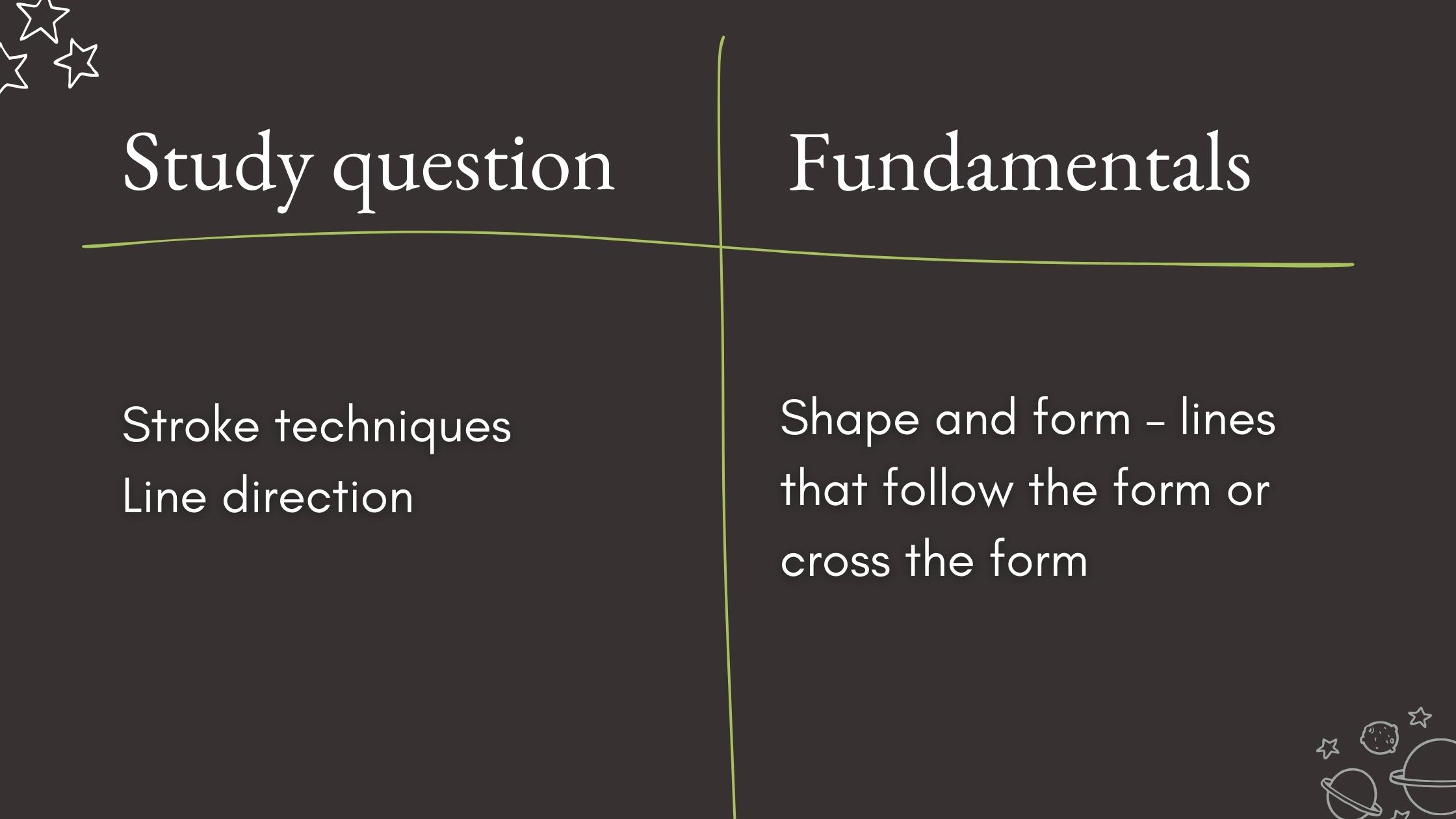
Using a framework
The framework is a series of questions.
These questions can give us clues as to why the master made the decisions that they did. The answers will help focus our study on a specific learning objective and tasks.
A learning objective is the skill and knowledge that you will gain. A learning task is the activity that will help you achieve that objective.
For more on how to set up a learning plan, read the five steps to becoming a better self-taught artist.
Ask the questions, then tie those to a key fundamental so that you have something concrete to practice.
By going through that structured analysis, you can see how objectives and tasks would start to emerge.
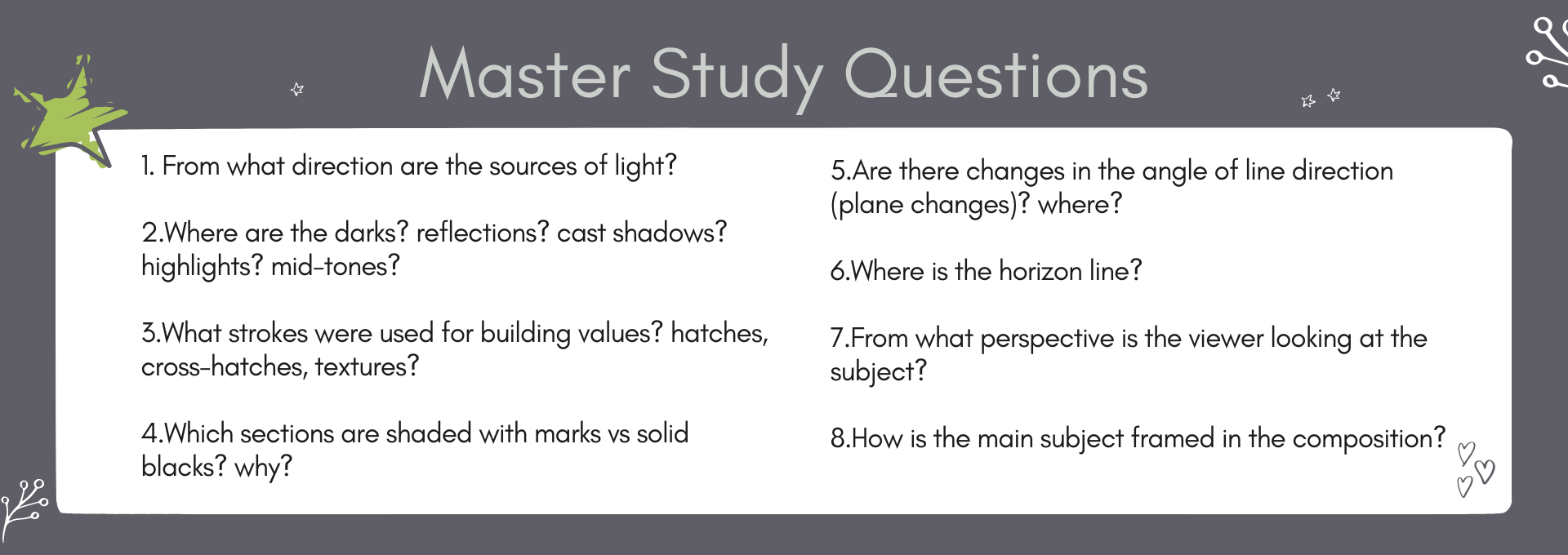
How to Analyse a Master Piece
When I used the framework to analyze the Arzach piece, three things jumped out for me:
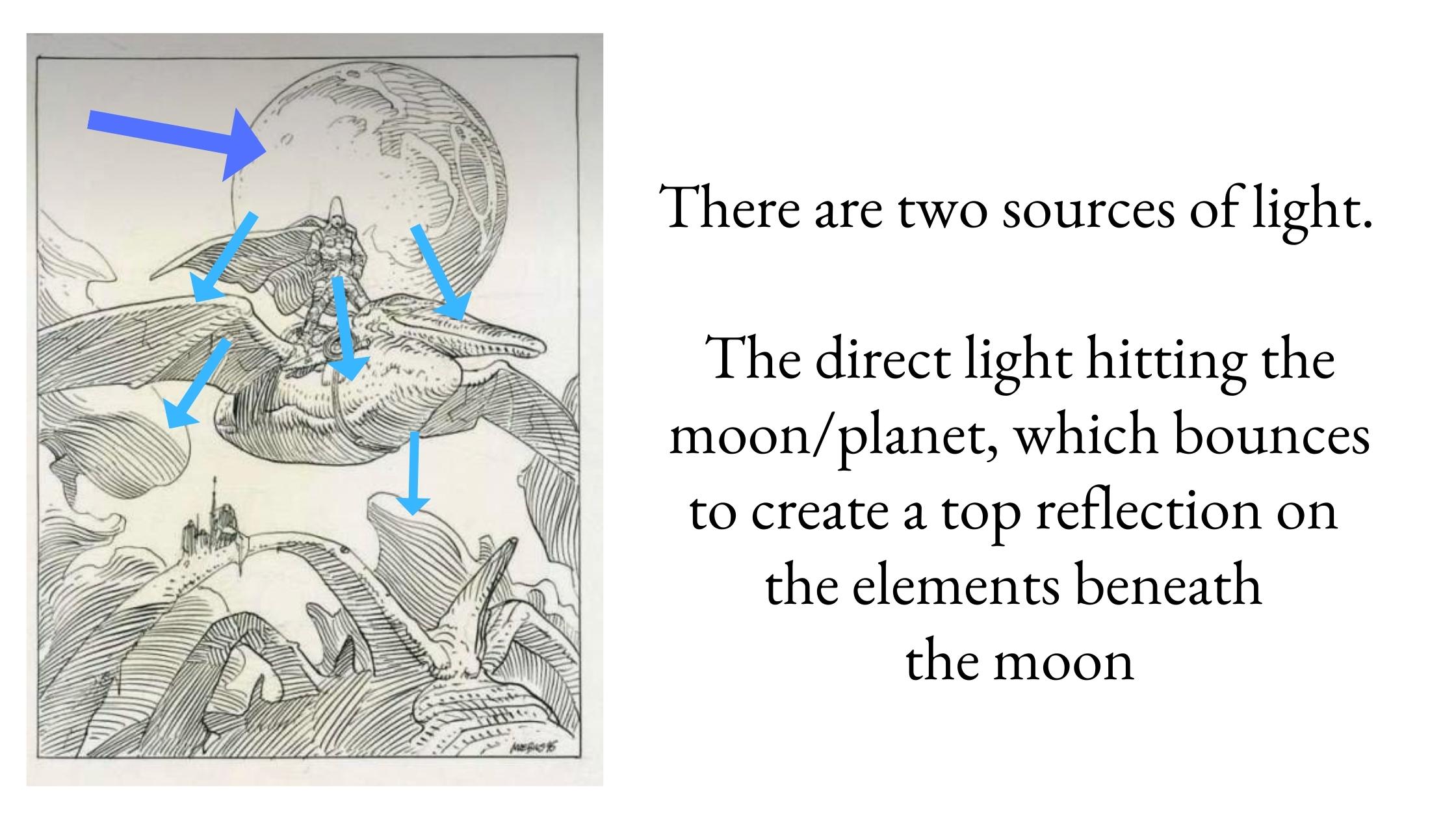
First observation
The source of light. There are two sources of light. The direct light hits the moon/planet, which bounces to create a top reflection on the elements beneath the moon.
Objective 01
I typically draw with a single source of light, so a potential objective for me is to introduce more complex lighting in my art.
Second observation
When looking for the horizon line, I noticed the effects of perspective, space, and geometry. Moebius didn’t use excessive foreshortening to emphasize the viewpoint. Yet, there is an effect of perspective as though the viewer is standing beneath the character flying above on his steed.
Objective 02
I tend to draw scenes straight on, without perspective. Therefore, a good objective for me is to learn more about two-point and three-point perspectives so that I can use perspective in a composition.
Third observation
As mentioned, the Moebius stroke technique is the most striking to me. He effectively communicates form, without the use of extreme contrasts. There are no solid blacks, excessive cross hatches, or textures. He uses simple line weight and flow magnificently to communicate form.
Objective 03
I often rework my pieces. I add strokes and draw over some of the lines to thicken or bump up the contrast. Consequently, I would benefit from being more deliberate with my first set of lines.
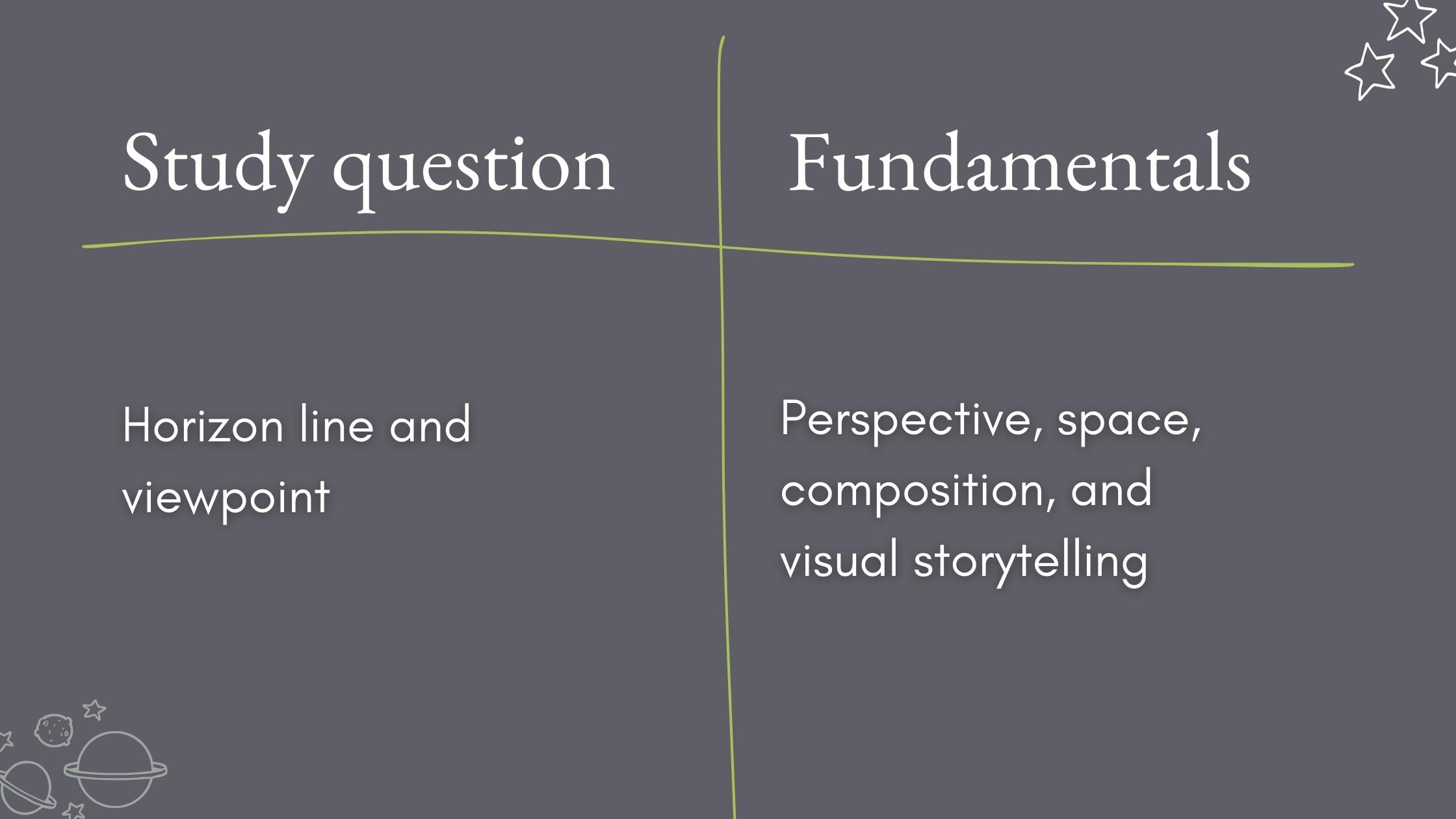
By going through this reverse approach, three objectives that fit my needs have emerged.
Based on those three objectives, my learning tasks are to:
- Trace and copy the Moebius piece with a focus on gaining more insights toward achieving my three objectives
- Look for more learning resources (courses, tutorials, books) on topics related to my learning objectives
- Aim to practice exercises specific to my learning objectives
When I start to see progress on my objectives, I will incorporate my learnings into a project – a finished piece.
Bonus tip
In an interview, Moebius said that he spends a lot of time doing his pencils before inking so that he can focus on the artistry when applying the ink, rather than on the decision-making.
Therefore, a key tip from the master, is to spend more time on the under-drawing, doing the pencils, and not rushing to the final ink application.
“I spend more time on the pencils.”
– Jean Giraud
Last step
To accelerate your learning, the important last step is to document what you did differently so that it becomes easier to track your progress as part of your art process.
Keeping notes will give you information about what worked well and what needs more or less effort.
Summary
As you can see there is a lot to learn from studying the masters beyond tracing and copying.
- Start with the end in mind.
- Seek to understand why the master made the decisions that they did.
- Choose a master that suits your objectives, or analyze a master to reveal your objectives.
If you don’t have a coach or a mentor to guide you, these self-directed methods of study will help you make the best of your time and efforts to accelerate your learning.
In the resources section below are links to videos on Jean Giraud (Moebius) if you’d like to learn more about him.
Grab your free PDF of the study questions with fundamentals.
Let me know in the comments if you have tried or will try these approaches to studying the masters.
I’d also love to read your suggestions for other pen and ink masters to feature in the future, here or on my YouTube channel.
Resources
Tools and supplies I use in my studio.
ARZACH hardcover book by Moebius (French edition)
Mœbius | The Infinite Universe Of A Genius (YouTube video)
An evening with Moebius CTN Special (YouTube video)
Follow Longstride Illustration on Instragram to watch process videos and see finished artwork.
Want a template?

This 13-page PDF checklist walks you through the process of conducting a master study based on your learning objectives. It includes:
- Self-assessment guides
- Exercises
- Definitions of the art fundamentals for pen and ink
- Resources





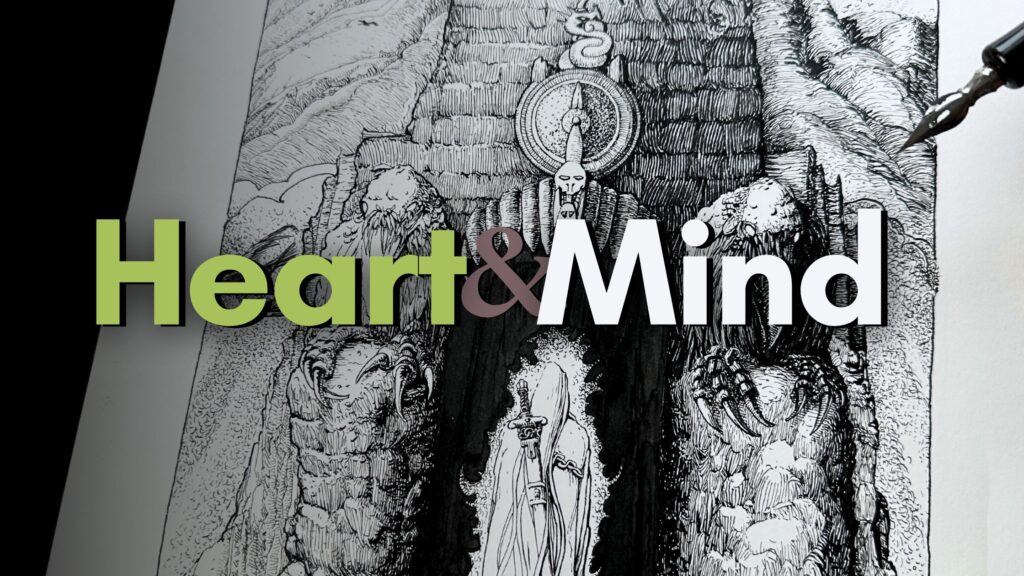
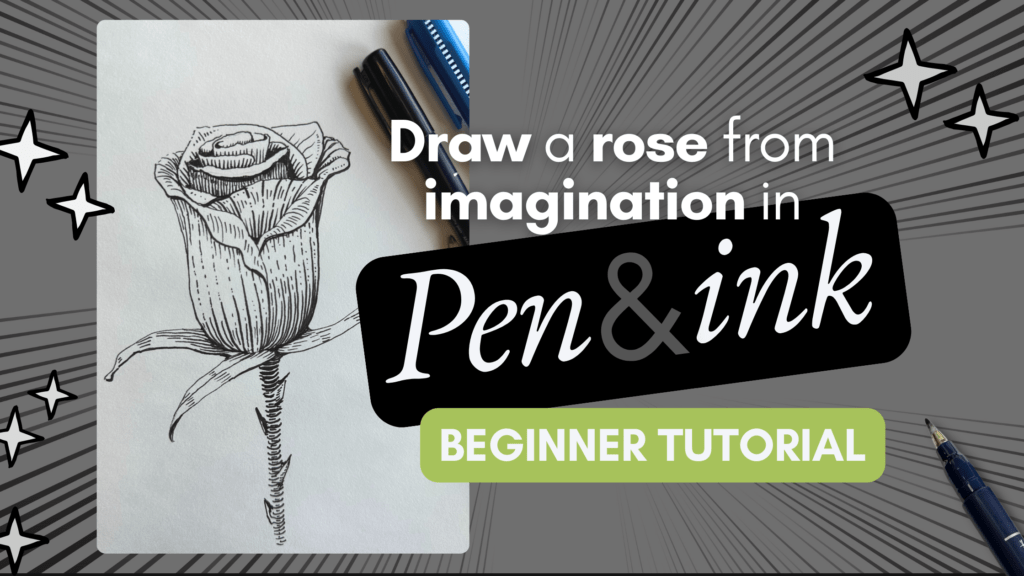
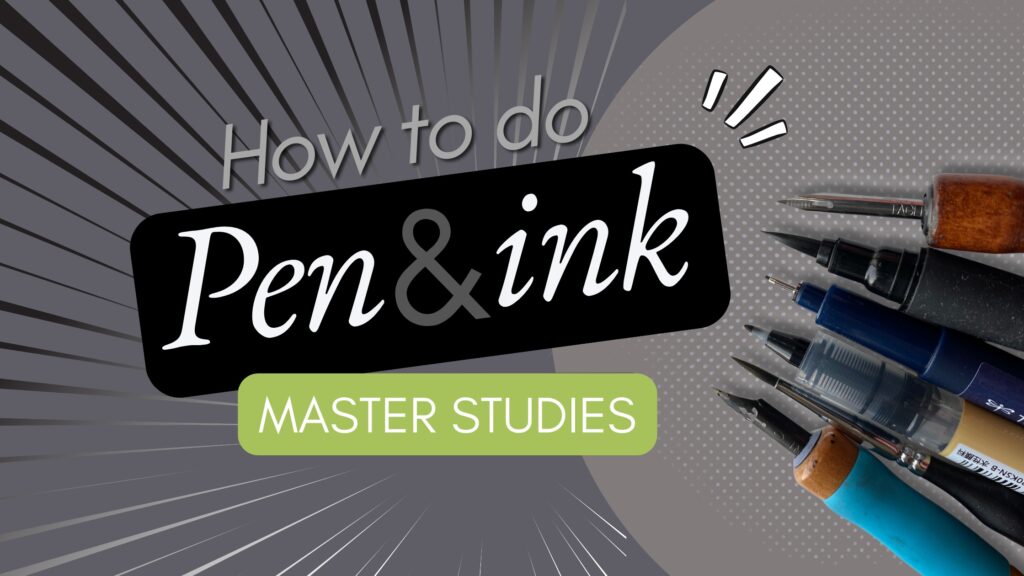
Chloe-
This is an excellent post! Thank you for the added PDF and resources. I have been floundering around trying to create a plan to learn/improve pen and ink skills (with improve being in quotes as I have no skills other than can hold a pen 🙂 I will be diving into your posts and putting your steps into action. And lucky for me, I have a book of Moebius artwork waiting for me on my bookshelf! Found you through your Inktober article/video. Also super helpful!
Again thanks,
Tracy
Tracy – Awesome to hear that the article was helpful. A Moebius book! That is a treasure. Thanks for finding me and leaving a comment. All the best with your pen and ink projects 🙂